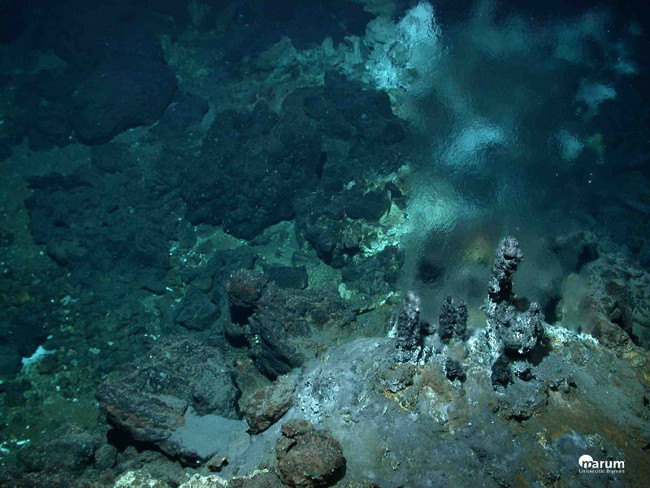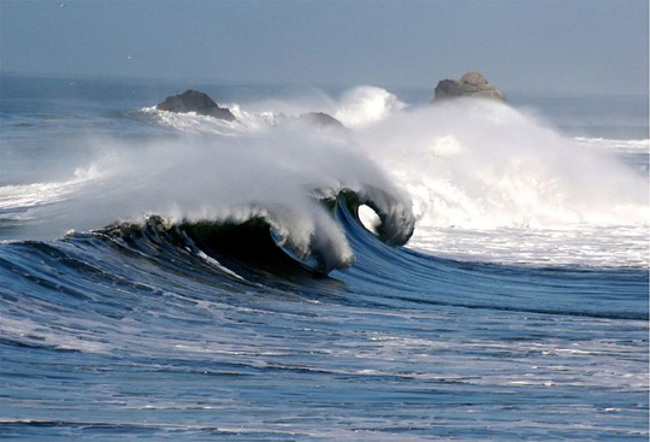Decipher the mystery of the extinction that destroyed 96% of marine life
According to scientists since 540 million years ago, our Earth has experienced about 20 extinctions large and small. 252 million years ago, a devastating extinction almost all the life of the ocean on Earth happened to be one of them.
The scientific world calls this the most devastating Great Dying. All 96% of marine life on the planet is completely destroyed, strongly affecting the evolution of the Earth.

Great Dying.(Artwork: Internet.)
Only 4% of the group of survivors of the Great Extinction are the ancestors of much of life on Earth today. And it takes up to 30 million years since then, the new vertebrate group has a chance to recover in variety and quantity.
Although some of the information of this Great Extinction was learned, until now, world paleontologists still do not know the true cause of this global destruction.
 Pangaea supercontinent at the end of the Paleozoic and the beginning of the Mesozoic era.(Photo: Internet.)
Pangaea supercontinent at the end of the Paleozoic and the beginning of the Mesozoic era.(Photo: Internet.)
Recently, a group of scientists have been studying the layers of reefs in the waters of Canada and Japan, which once belonged to a large ocean surrounding Pangea supercontinent in the end of Paleozoic and the beginning of the Great Birth - ocean Panthalassa.
They found the sulfur dioxide compound (SO₂) mixed with another sulfur compound to form a powerful chemical poison. Over time, this amount of chemical toxins is growing and being "kept" by sediments in the seabed.

There will be no Great Extinction if there are no subterranean waves , called Shoaling by scientists. They destroyed the subsurface sediments and released huge amounts of poison stored for years. Thanks to the huge ocean waves, the poison spreads and destroys life throughout the ocean. Only 4% of marine life on Earth survived.

Despite the conclusion that Shoaling was the indirect cause of the Great Extinction occurred 252 million years ago, scientists still cannot give an explanation of the formation of subterranean waves. that period. And why the aftermath of a Great Extinction under water also caused 70% of terrestrial life to be destroyed.
- How long does a dinosaur egg take to hatch?
- What is the most devastating natural disaster that the earth has experienced?
You should read it
- Surprise with the facts about the ocean
- 10 photos showing how small people are in the ocean
- Fish are encroaching on the sea kelp species
- Simulation equipment shows that the face of the Earth has a new continent after another 250 million years
- Deep-water fish use hydrothermal vents to hatch eggs
- Did you know: 100 scientists, 28 countries are calling for seagrass protection
- NASA will reveal new discoveries about extraterrestrial ocean worlds tonight
- Found shelter for corals threatened by global warming
May be interested
- After completing the sea cable line SMW3, the Internet returned to normal
 according to information from vnpt, all information from vietnam to international via smw3 sea cable has been restored.
according to information from vnpt, all information from vietnam to international via smw3 sea cable has been restored. - Successfully decipher the mystery of the bottomless waterfall 'devour' everything in America
 finally scientists have the answer to the mystery of a waterfall that can swallow everything famous in minnesota state park in the us after 60 years, since its discovery in 1957.
finally scientists have the answer to the mystery of a waterfall that can swallow everything famous in minnesota state park in the us after 60 years, since its discovery in 1957. - Nerves play an important role in the extraordinary camouflage ability of ink
 scientists at the marine biology laboratory and the university of cambridge have discovered that the cuttlefish controls the ability to stealth with a giant known little nerve circuit.
scientists at the marine biology laboratory and the university of cambridge have discovered that the cuttlefish controls the ability to stealth with a giant known little nerve circuit. - The Vietnam Internet will go international on AAG submarine cable to be restored on 9/11
 the breakdown of the s1h branch connecting to the internet from vietnam to hong kong on the aag sea cable has been repaired since september 5 and is expected to be completed on september 11th. .
the breakdown of the s1h branch connecting to the internet from vietnam to hong kong on the aag sea cable has been repaired since september 5 and is expected to be completed on september 11th. . - The noise of ships affects the communication ability of marine creatures
 scientists at the university of auckland conducted the first large-scale survey of the effects of ship noise in the waters of hauraki bay.
scientists at the university of auckland conducted the first large-scale survey of the effects of ship noise in the waters of hauraki bay. - The AAG fiber optic cable has just recovered, APG has a problem again
 on december 23, the apg submarine cable route saw a number on the branch from vietnam to singapore, causing about 10% of internet traffic from vietnam to be affected internationally.
on december 23, the apg submarine cable route saw a number on the branch from vietnam to singapore, causing about 10% of internet traffic from vietnam to be affected internationally. - The facts surprise you about life
 if you believe that the present life is not surprising, then read 18 incredible facts about the world below to see that the thought is not true at all.
if you believe that the present life is not surprising, then read 18 incredible facts about the world below to see that the thought is not true at all. - The deadly danger in the 2nd Bermuda triangle triangle
 manoumi's sea or dragon's triangle, whose japanese name is manoumi is an area of the pacific ocean. this is considered a marine graveyard when many mysterious disappearances and shipwrecks have not been deciphered.
manoumi's sea or dragon's triangle, whose japanese name is manoumi is an area of the pacific ocean. this is considered a marine graveyard when many mysterious disappearances and shipwrecks have not been deciphered. - The wreck of marine life is like the Loch Ness monster floating on the coast of Georgia
 the corpse of a mysterious sea creature has been washed away on the beach in georgia and people associate it with the loch ness monster.
the corpse of a mysterious sea creature has been washed away on the beach in georgia and people associate it with the loch ness monster. - Deep-water fish use hydrothermal vents to hatch eggs
 research groups at the ocean, darwin fund and galapagos national park management board discovered that some larvae hatch their eggs in deep hydrothermal vents, an unprecedented behavior. observed in marine animals.
research groups at the ocean, darwin fund and galapagos national park management board discovered that some larvae hatch their eggs in deep hydrothermal vents, an unprecedented behavior. observed in marine animals.










 New discovery: Dragonfly wings can kill bacteria without antibiotics
New discovery: Dragonfly wings can kill bacteria without antibiotics Why can whale carcass explode?
Why can whale carcass explode? How do people with autism look at the world?
How do people with autism look at the world? Controversial problems 'you solve'
Controversial problems 'you solve' Top 10 most special people in the world
Top 10 most special people in the world What will happen in the body when we shoot guns?
What will happen in the body when we shoot guns?